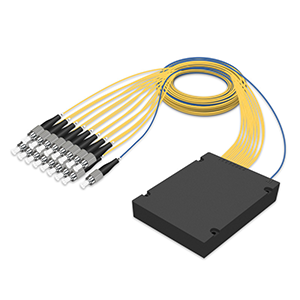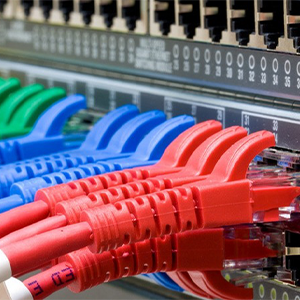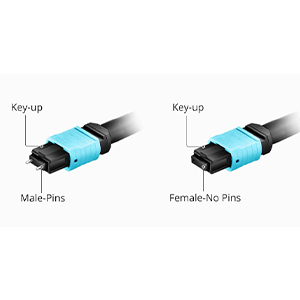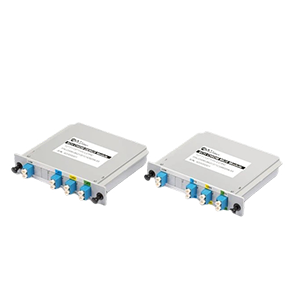High-speed Ethernet technology plays an important role in modern networks. This article will explore the types of cables that can support 10Gbps Ethernet. We will first define the role and common types of Ethernet cables and outline their main performance indicators. Next, we will introduce the basic principles of 10Gbps Ethernet and analyze its stringent requirements for cable performance, including higher bandwidth and longer transmission distance.
Then, we will focus on two types of cables that support 10Gbps Ethernet – fiber optic cables (OM3 and OM4) and copper cables (Cat6a and Cat7 UTP). Finally, we will compare and analyze the differences between these cable types in terms of transmission performance, distance and cost.
What is Ethernet Cable
Ethernet cables are used to connect network devices and transmit data and signals. The main types include twisted pair cables (such as Cat5e, Cat6) and optical fiber. Twisted pair cables are suitable for medium and short-distance network connections, with low cost and easy installation; optical fiber is suitable for long-distance, high-speed transmission and strong anti-interference ability. Cable type affects network speed, bandwidth and transmission distance.
1. The role and common types of Ethernet cables:
Ethernet cables are important physical media for connecting network devices for data transmission. They mainly include the following two types:
- UTP (Unshielded Twisted Pair) cable: It adopts unshielded twisted pair copper wire design and is widely used in LAN environment.
- Fiber optic cable: It uses optical fiber as the transmission medium to achieve higher transmission rate and distance.
2. The main performance indicators of Ethernet cables:
The key performance indicators of Ethernet cables include:
- Transmission rate: refers to the maximum data transmission rate supported by the cable, such as 100Mbps, 1000Mbps, 10Gbps, etc.
- Bandwidth: refers to the bandwidth of the cable, which determines its transmission capacity.
- Maximum transmission distance: refers to the maximum effective transmission distance of the cable.
Different types of Ethernet cables have differences in these performance parameters and are suitable for different network environments and application scenarios.
In general, as an important transmission medium in the network, the performance of Ethernet cable is a key factor affecting network performance and reliability. Users need to choose the appropriate cable type according to actual needs.
Features of 10Gbps Ethernet technology
10Gbps Ethernet technology provides data transmission rates of up to 10Gbps and is suitable for high-performance computing and data center environments. It supports optical fiber and copper cable (such as Cat6a) transmission, has low latency and high bandwidth, can handle large data traffic, and improve network efficiency and performance.
1. Basic principles of 10Gbps Ethernet:
- 10Gbps Ethernet (10GbE) provides an ultra-high data transmission rate of up to 10Gbps.
- Compared with previous Ethernet technologies, 10GbE can significantly improve network bandwidth and performance.
- 10GbE is mainly used in scenarios that require high bandwidth, such as data centers and backbone networks.
2. 10GbE requirements for cable performance:
In order to support ultra-high-speed transmission of 10Gbps, 10GbE has the following higher requirements for cable performance:
(1) Higher bandwidth:
- 10GbE requires cables to have a larger bandwidth, usually above 500MHz.
(2) Excellent anti-interference ability:
- 10GbE has higher requirements for signal quality and stability, and the cable needs to have excellent shielding and anti-interference performance.
(3) Longer transmission distance:
- 10GbE application scenarios usually involve larger-scale network deployments, requiring cables to support transmission distances of more than 100 meters.
Therefore, to meet the needs of 10GbE networks, it is necessary to use cable types with better performance, such as UTP cables with Cat6a or Cat7 standards, or fiber optic cables. In short, the high-speed transmission requirements of 10GbE technology have put forward higher standards for cable performance, promoting the continuous advancement of cable technology.
Cable types that support 10Gbps Ethernet
Cable types that support 10Gbps Ethernet include optical fiber and copper cables. Optical fiber (such as OM3 and OM4) is suitable for long-distance and high-speed transmission. Copper cables (such as Cat6a and Cat7) are suitable for shorter distances and provide high bandwidth and good performance. Optical fiber is more expensive, but has a longer transmission distance, while copper cable has advantages in cost and ease of installation.
1. Fiber optic cable:
- Fiber optic cable is one of the main transmission media for 10GbE networks.
- Common fiber optic cable standards include:
- OM3 multimode fiber optic cable: can support a maximum 10GbE transmission distance of 300 meters.
- OM4 multimode fiber optic cable: can support a maximum 10GbE transmission distance of 400 meters.
- Fiber optic cable has the advantages of ultra-high bandwidth and strong anti-interference, making it very suitable for 10GbE long-distance transmission applications.
2. Copper Cable:
- Among copper cables, Cat6a and Cat7 UTP cables can meet the transmission requirements of 10GbE.
- Cat6a cables support a maximum 10GbE transmission distance of 55 meters.
- Cat7 cables support a maximum 10GbE transmission distance of 100 meters.
- These high-performance UTP cables have been greatly improved in bandwidth, shielding and other indicators, and are suitable for 10GbE medium and short distance transmission.
In summary, both fiber optic cables and high-performance UTP cables are suitable choices for 10GbE networks. Choose fiber optic or UTP cables according to the specific transmission distance and application scenario requirements. Optical fiber is more suitable for long-distance transmission, while UTP cable is more suitable for medium- and short-distance applications.
Performance comparison of different cable types
The performance of different cable types varies significantly. Optical fiber provides high bandwidth and long-distance transmission, suitable for high-speed networks, but the cost is relatively high. Cat5e supports 100Mbps, Cat6 is suitable for 1Gbps, and Cat6a and Cat7 support 10Gbps, suitable for high-speed connections over shorter distances. Optical fiber has strong anti-interference ability, while twisted pair is economical and practical.
1. Comparison of the characteristics of optical fiber cable and copper cable:
- Optical fiber cable:
- It has ultra-high bandwidth and transmission rate, and can easily support 10Gbps Ethernet.
- The transmission distance is long, and OM4 optical fiber can reach 400 meters.
- Strong anti-interference ability, suitable for harsh environment applications.
- But the cost is relatively high, and the installation and maintenance are also complicated.
- Copper cable:
- The bandwidth and transmission distance are relatively low, but the cost is low.
- The installation and maintenance are relatively simple, and the application is relatively wide.
- Suitable for medium and short distance 10Gbps Ethernet application scenarios.
2. Performance comparison of Cat6a and Cat7 UTP cables:
- Cat6a cable:
- Supports a maximum 100-meter 10GbE transmission distance.
- Maximum bandwidth 500MHz.
- Cat7 Cable:
- Supports 10GbE transmission distance up to 110 meters.
- Maximum bandwidth 600MHz.
- Better shielding performance and stronger anti-interference ability.
In short, different types of cables have trade-offs in bandwidth, transmission distance, cost and installation complexity. Fiber optics provide higher performance but higher cost, while copper cables have compromised performance but lower cost. Among copper cables, Cat7 has certain advantages over Cat6a. Users need to choose the right cable type according to actual needs.
Summary
Choosing the right cable is the key to deploying 10Gbps Ethernet. Our company has long focused on the research and development and application of high-speed network technology and has rich practical experience. We offer a full range of 10Gbps fiber and copper cable products to meet the needs of different network environments. Our cable products use industry-leading technical solutions and achieve excellent levels of transmission performance, reliability and compatibility.
At the same time, our engineering team will provide you with professional demand analysis and solution design services to ensure that the deployed 10Gbps Ethernet cable solution can meet your actual needs to the greatest extent. Contact us now to learn more.
10Gbps Ethernet Cable FAQ
Category 6a (Cat6a), Category 7 (Cat7), and Category 8 (Cat8) Ethernet cables can maintain 10Gbps speeds over varying distances.
Yes, but only for shorter distances up to 55 meters. For reliable 10Gbps over longer distances, Cat6a or higher is recommended.
Cat6a cables can maintain 10Gbps speeds over distances up to 100 meters.
Cat7 offers better shielding and performance, maintaining 10Gbps speeds up to 100 meters, similar to Cat6a, but with less interference and higher frequency support.
Cat8 cables are not necessary for 10Gbps Ethernet; they are designed for higher speeds (up to 40Gbps) but can also maintain 10Gbps over shorter distances (up to 30 meters).
All three cable types typically use RJ45 connectors for 10Gbps Ethernet, though Cat7 may also use GG45 or TERA connectors in some cases.
Yes, fiber optic cables like OM3 and OM4 can maintain 10Gbps speeds, often over longer distances than copper cables.
For longer distances (up to 400 meters), fiber cables like OM4 are better. For shorter distances (up to 100 meters), Cat6a or Cat7 copper cables are sufficient.
Electromagnetic interference (EMI) and physical cable quality (e.g., shielding, twist rate) can affect a cable’s ability to maintain 10Gbps speeds, with shielded cables like Cat7 and Cat8 offering better performance in high-EMI environments.
Yes, but you would need to replace the existing Cat5e or Cat6 cables with Cat6a, Cat7, or Cat8 cables to reliably achieve and maintain 10Gbps speeds.





